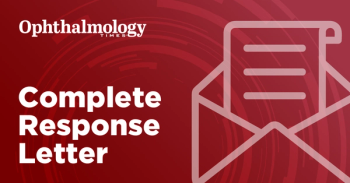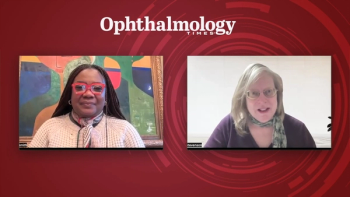
Study: Exudative AMD characteristics unresponsive to loading doses of anti-VEGF therapy
The researchers conducted a retrospective chart review of patients with typical exudative AMD that had been treated with anti-VEGF therapy injections.
Korean investigators reported that certain retinal characteristics of age-related macular degeneration (AMD) are unresponsive to 3 loading doses of anti-vascular endothelial growth factor (VEGF) treatment. Yong-Yeon Song, MD, and colleagues from the Department of Ophthalmology, Konyang University College of Medicine, Daejeon, Republic of Korea, reported their findings in Retina.1
The researchers conducted a retrospective chart review of patients with typical exudative AMD that had been treated with anti-VEGF therapy injections. The goal of the study was to pinpoint the specific clinical features that resulted in refractoriness to the 3 consecutive loading dose injections in their patients.
The researchers divided the patients into 2 groups: group 1, those patients without residual fluid on optical coherence tomography (OCT) images and group 2, those with residual fluid.
Ninety patients were included in the study, 60 patients in group 1 and 30 patients in group 2.
Dr. Song and colleagues found that the OCT images showed that the choroid differed significantly between groups 1 and 2 groups in thickness, i.e., 246.60 ± 67.67 µm vs. 286.90 ± 40.92 µm, respectively; p = 0.001).
When evaluated by OCT angiography (OCTA), the results showed that the respective presence of branching (48.3% vs. 73.3%; p = 0.024), loops (31.7% vs. 66.7; p = 0.002), and a peripheral arcade (40.0% vs. 76.7%; p = 0.001) differed significantly.
Logistic regression analysis showed that the initial choroidal thickness (B = 0.012; p = 0.007) and the presence of loops (B = 1.289; p = 0.015) and a peripheral arcade (B = 1.483; p = 0.008) significantly affected the anti-VEGF treatment response.
The authors concluded that patients with typical exudative AMD who had a thicker choroid on OCT and the presence of peripheral arcades and loops of macular neovascularization on OCTA images had a poor response to 3 loading doses of anti-VEGF therapy.
Reference
1. Song Y-Y, Jun J-H, Kim J-T, et al. Characteristics of age-related macular degeneration showing a poor response to three loading doses of anti–vascular endothelial growth factor. Retina 2023;43:8-15;doi:10.1097/IAE.0000000000003628
Newsletter
Don’t miss out—get Ophthalmology Times updates on the latest clinical advancements and expert interviews, straight to your inbox.













































